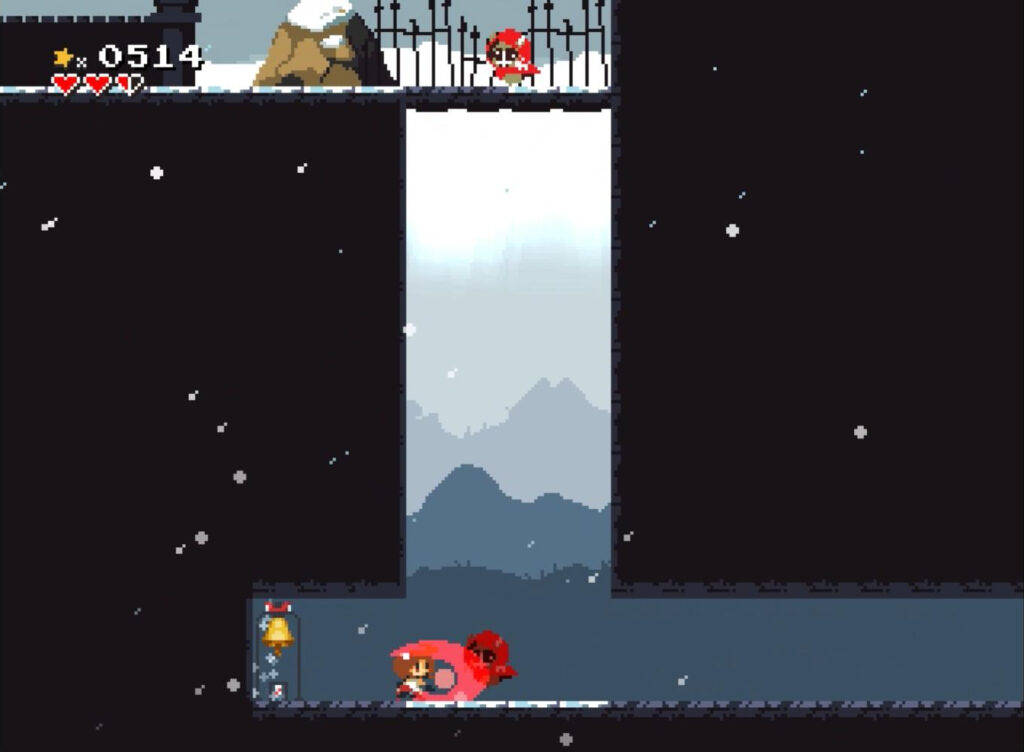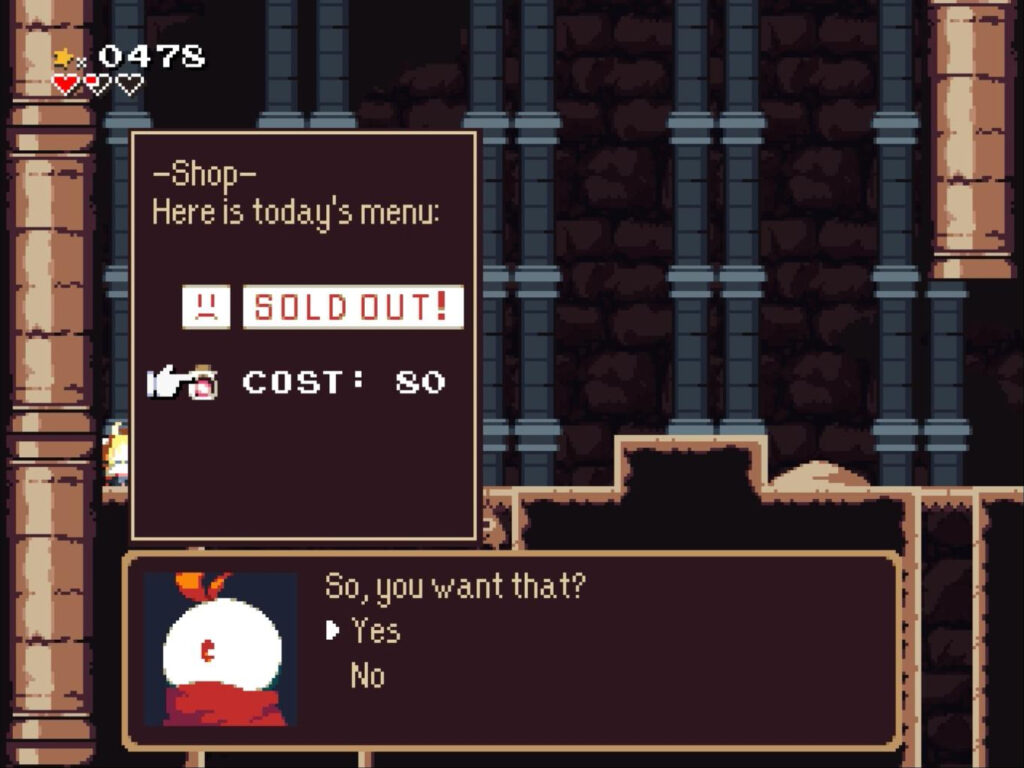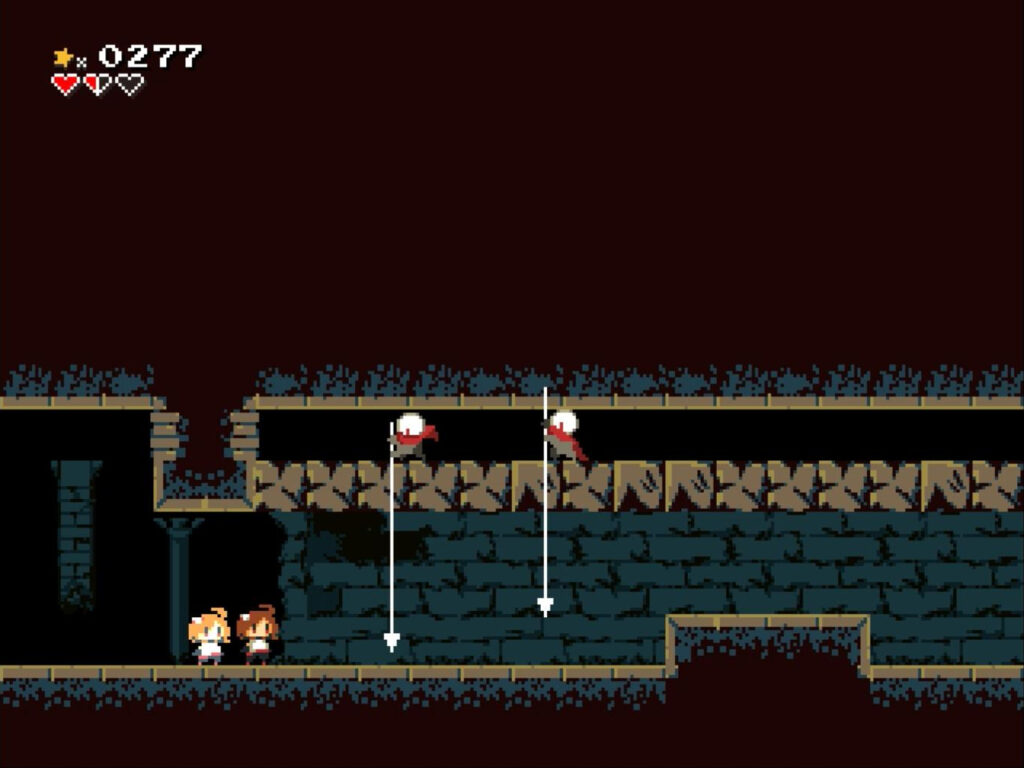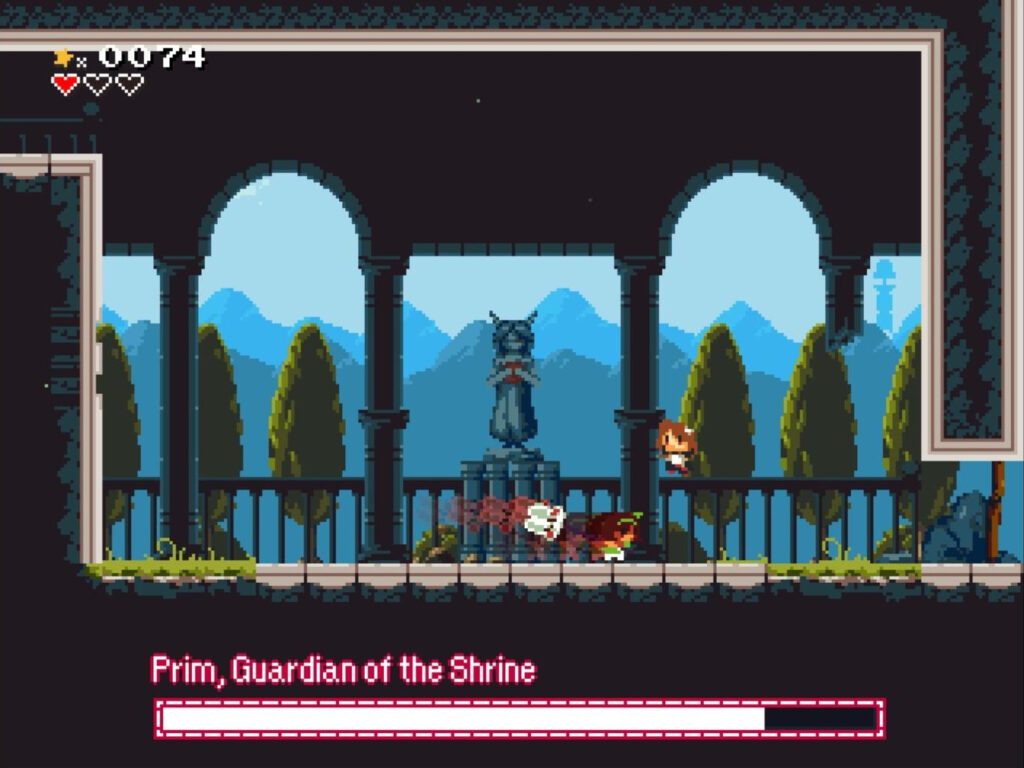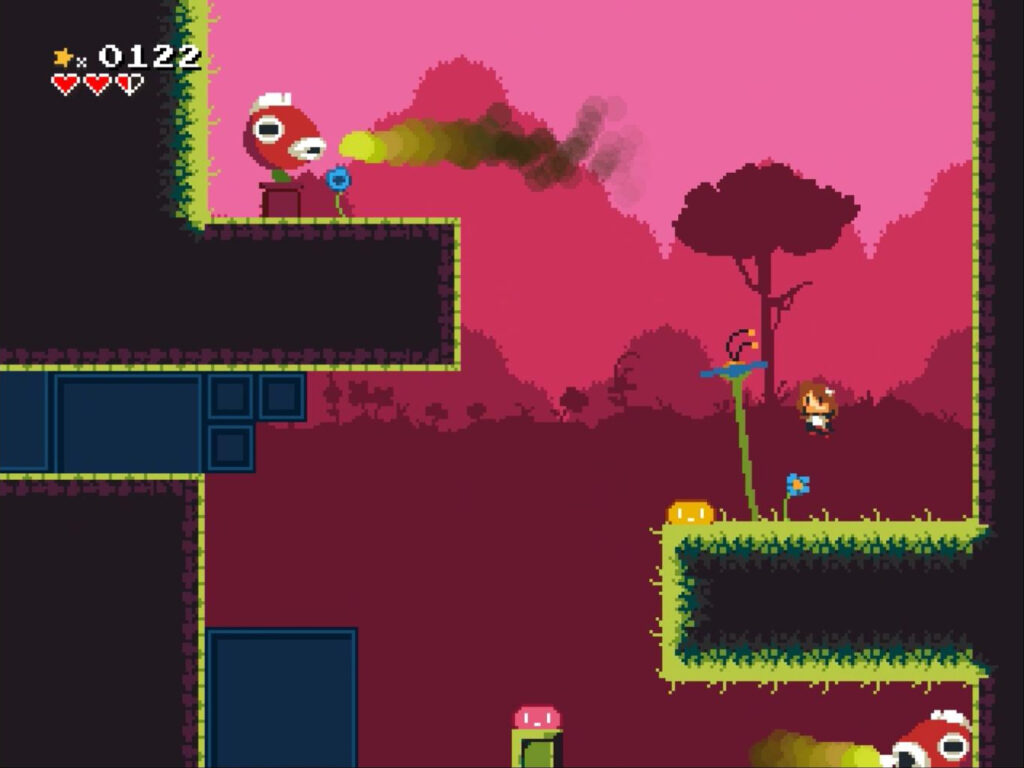Momodora III is a whimsical, Japanese-inspired platformer based on simple and addictive console and arcade classics.
Players play as either Momo or Dora—Dora being the easier option, as she has extra health and jumps a little better than does Momo—priestesses who must save the world from hell’s escapees. To this end, the player takes their chosen character through varied environs, from sunny plains to ancient ruins to frozen castles, defeating enemies and collecting collectables along the way.
Players’ abilities are limited: they can walk around, attack, and jump. There are but two, simple attacks, one of them a melee swipe, and the other a projectile in the form of paper seals. Mobility feels constrained, Momo’s especially, which does take getting used to, but it does make sense: this subdues the whimsy on display elsewhere in the title, which keeps the game from being entirely silly. It’s a good design decision.
Power-ups are in the form of persistent items, which players can equip; some items augment attacks, others alter attributes, yet others change how the world interacts with the priestesses, and one even summons a ghostly fighting companion. The game has all of one consumable, a healing jar, which also requires an item slot to use. Items are collected throughout the world, or bought at stores, which accept fluffy, pink asterisks as currency.
There are only three active item slots, while there are quite a few more items to collect, so there is some strategy in deciding what to have readied for a particular situation or level. These items can be swapped out on the fly, at the risk of leaving the player character open to attack, as opening the inventory does not pause the game.
Some people will take issue with the inclusion of particular power-ups, and I wouldn’t say that’s without cause. However, even with the most powerful of power-ups equipped, players will find themselves dying. That’s beside the point, anyway: the items exist as options, allowing players to tune the game to their skill level and playstyle. They serve that function well.
There’s a problem with the items, but their potency is not it. The problem with the game’s power-ups is that they’re far too grounded. There’s nothing crazy or surprising among the options. They don’t affect the gameplay in any interesting way, serving merely to make the game easier. Momodora III has no fire flowers or super mushrooms.
That’s not to say the gameplay is otherwise poorly conceived. Enemies are pattern-based, so the challenges should be easy; however, often enough, there’s enough going on at the same time that players will feel challenged. Boss battles especially focus on rhythm and timing, and can be quite the drawn-out ordeals, so maintaining concentration and accuracy long enough to overcome them can be difficult. Players will die over and over and over again, first while they figure out the pattern, and then while they try to circumvent it. Enemies aren’t the only dangers of which to be wary, as traps and environmental threats litter the world, from ground that at first glance appears firm but isn’t to pressure plates that loose arrows.
The default control scheme is less than ideal. Thankfully, input bindings can be changed. A gamepad is the better controller option, but a keyboard will work, too, provided it’s an anti-ghosting keyboard; players regularly need to use more than one button simultaneously.
Momodora III is well suited to speedrunning, as it’s both short and has a counter that keeps track of time; only successful runs between save points count toward the counter, so deaths don’t add time onto a run. Depending on how practiced and experienced a player is in 2D platformers, and how focused they are on reaching the end instead of exploring or collecting items, an initial run-through of the game will likely take between three to eight real-time hours.
Players may find themselves wanting to take a leisurely stroll through the levels, in order to listen to the music and enjoy the scenery. Unfortunately, that’s just not possible, as the enemies in every “room” refresh when players return to it.
The game is at least competent, and has pockets of brilliance—Old Madryn, the second level, being the best evidence of that. The music, art, and foes of that level complement each other beautifully, bringing an ethereal eeriness out of the game. The other levels fall short of Old Madryn’s artistry—in particular, the Dim Hideout and the last level feel drab and uninteresting in comparison, especially since they reuse enemies from earlier in the game—but they are all at least fine.
So where does that put the game on the totem pole of platformers?
This is a simple platformer, and also more. There are plenty of games that attempt to capture the lure of the genre, but they rarely do so with this much charm. Momodora III is an homage with a sophisticated sensibility. It certainly stands out, at least in parts.
The franchise doesn’t seem quite “there” yet, however. Despite its brevity, the game begins to drag and feel rather more repetitive the further one progresses. There’s just not enough here to compel people to search it out if it’s not in their wheelhouse.
Still, Momodora III is an adorable, infuriating little package. If you get the chance to play it, do, and if you find yourself hankering for a platformer, this may be one to have a look at.
Momodora III was reviewed using a code provided by Rdein. You can find additional information about NicheGamer’s review/ethics policy here.
The Verdict: 6.5
The Good:
- Adorable
- Points of intensely interesting stuff
- Satisfying, and customizable, difficulty
- Short
The Bad:
- Repetitive
- Uninteresting power-ups
- Short
